 W
WAntigua and Barbuda is an island nation made up of: Antigua island which is divided into six parishes; and of the two dependencies of Barbuda island and Redonda island.
 W
WLocal government in the Bahamas exists in two forms, namely second-schedule and third-schedule district councils. There are a total of 32 local government districts: 13 second-schedule districts, which are further sub-divided into town areas, and 19 third-schedule districts, which are all unitary authorities. The second and third schedules together make up the first schedule. Local government policy is formulated and administered by the Department of Lands and Local Government through the Office of the Prime Minister. The day-to-day policy handling of the portfolio falls to the Minister of Local Government who also is empowered to create new local government areas from time to time based on demographics. The administrative and financial management is overseen by the ministry’s permanent secretary.
 W
WThe country of Barbados is divided into sub-regions known as parishes.
 W
WLocal government in Belize consists of four types of local authorities: city councils, town councils, village councils and community councils. Some rural communities also have an alcalde, a local magistrate who performs both administrative and judicial functions.
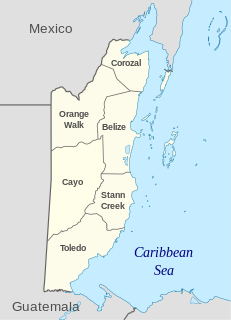 W
WBelize is divided into six districts.
 W
WBelize's 6 districts are politically divided into 31 constituencies. Each constituency sends one representative to Belize's House of Representatives for 5-year terms. This election is known as the General Election. Each person votes for the candidate they would want to represent their constituency in Central Government.
 W
WThe land area of Bermuda is divided into nine parishes. There are also two defined municipalities, located in the boundaries of two of the parishes.
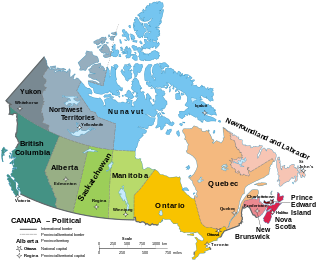 W
WThe provinces and territories of Canada are sub-national divisions within the geographical areas of Canada under the jurisdiction of the Canadian Constitution. In the 1867 Canadian Confederation, three provinces of British North America—New Brunswick, Nova Scotia, and the Province of Canada —were united to form a federated colony, becoming a sovereign nation in the next century. Over its history, Canada's international borders have changed several times, and the country has grown from the original four provinces to the current ten provinces and three territories. Together, the provinces and territories make up the world's second-largest country by total area.
 W
WThe census geographic units of Canada are the census subdivisions defined and used by Canada's federal government statistics bureau Statistics Canada to conduct the country's quinquennial census. These areas exist solely for the purposes of statistical analysis and presentation; they have no government of their own. They exist on four levels: the top-level (first-level) divisions are Canada's provinces and territories; these are divided into second-level census divisions, which in turn are divided into third-level census subdivisions and fourth-level dissemination areas.
 W
WJamaica's fourteen parishes are subdivided into sixty-three constituencies. The country follows the Westminster system and elects sixty-three Members of Parliament (MPs) to the Jamaica House of Representatives.
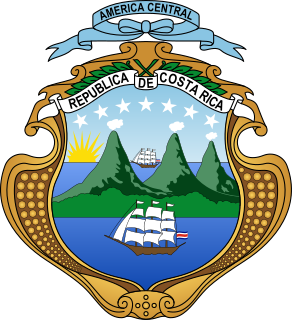 W
WAccording to the Political Constitution of Costa Rica of 1949, in article 168, the territorial division of Costa Rica is organized by law into three types of subnational entity:
 W
WAccording to Article 168 of the Constitution of Costa Rica, the political divisions are officially classified into 3 tiers of sub-national entities.
 W
WCosta Rica is administratively divided into seven provinces which are subdivided into 82 cantons, and these are further subdivided into districts. Cantons are the only administrative division in Costa Rica that possess local government in the form of municipalities. Each municipality has its own mayor and several representatives, all of them chosen via municipal elections every four years.
 W
WAccording to the Territorial Administrative Division the cantons of Costa Rica are subdivided into 488 districts (distritos), each of which has a unique five digit postal code.
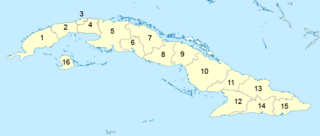 W
WAdministratively, Cuba is divided into 15 provinces and a special municipality that is not included in any province. The last modification was approved in August 2010, splitting Havana province into two new provinces: Artemisa and Mayabeque. The new provinces started functioning from January 1, 2011. Havana City Province recovered its original name: La Habana.
 W
WThe provinces of Cuba are divided into 168 municipalities or municipios. They were defined by Cuban Law Number 1304 of July 3, 1976 and reformed in 2010 with the abrogation of the municipality of Varadero and the creation of two new provinces: Artemisa and Mayabeque in place of former La Habana Province.
 W
WDominica is divided into ten parishes.The largest parish by population in Dominica is Saint George which contains the capital city Roseau and has a total population of 21,241. The smallest parish by population is Saint Peter with 1,430 residents. The largest parish by land area is Saint Andrew which spans 179.9 km2 (69.5 sq mi), while Saint Luke is the smallest at 10.8 km2 (4.2 sq mi).
 W
WThe Dominican Republic is divided into three macro-regions, which are in turn divided into ten regions.
 W
WThe Dominican Republic is divided into thirty–one provincias, while the national capital, Santo Domingo, is contained within its own Distrito Nacional.
 W
WThe provinces of the Dominican Republic are divided into two or more municipalities with the exception of the Distrito Nacional which consists of only one municipality – Santo Domingo. They are the second-level political and administrative subdivisions of the country.
 W
WJamaica's fourteen parishes are subdivided into sixty-three constituencies, which in turn are subdivided into electoral divisions.
 W
WThe 2 arrondissements of the Guyane department are:Arrondissement of Cayenne, with 14 communes. The population of the arrondissement was 176,357 in 2016. Arrondissement of Saint-Laurent-du-Maroni, with 8 communes. The population of the arrondissement was 92,995 in 2016.
 W
WThe following is a list of the 22 communes of the Guyane overseas department of France.
 W
WThe Caribbean island country of Grenada is divided into regions known as parishes.
 W
WThe 2 arrondissements of the Guadeloupe department are:Arrondissement of Basse-Terre, with 18 communes. The population of the arrondissement was 189,210 in 2016. Arrondissement of Pointe-à-Pitre, with 14 communes. The population of the arrondissement was 204,900 in 2016.
 W
WThe following is a list of the 32 communes of the Guadeloupe overseas department of France.
 W
WGuatemala is divided into 22 departments which are in turn divided into 340 municipalities.
 W
WThe departments of Guatemala are divided into 340 municipalities or municipios. The municipalities are listed below, by department.
 W
WIn the administrative divisions of Haiti, the department is the first of four levels of government. Haiti is divided administratively into ten departments, which are further subdivided into 42 arrondissements, 145 communes, and 571 communal sections.
 W
WAn arrondissement of Haiti is a level of administrative division in Haiti.
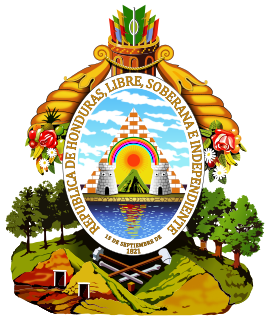 W
WHonduras is divided into 18 departments. Each department is headed by a governor, who is appointed by the President of Honduras. The governor represents the executive branch in the region in addition to acting as intermediary between municipalities and various national authorities; resolves issues arising between municipalities; oversees the penitentiaries and prisons in his department; and regularly works with the various Secretaries of State that form the President's Cabinet. To be eligible for appointment as governor, the individual must a) live for five consecutive years in the department; b) be Honduran; c) be older than 18 years of age and; d) know how to read and write.
 W
WHonduras is administratively divided into 18 departments which are subdivided into 298 municipalities. Municipalities are the only administrative division in Honduras that possess local government. Each municipality has its own elected mayor as opposed to the appointed governors of departments. For statistical purposes, the municipalities are further subdivided into 3731 aldeas, and those into 27969 caserios. At the lowest level, some caserios are subdivided into 3336 barrios or colonias.
 W
WThe parishes of Jamaica are the main units of local government in Jamaica. They were created following the English Invasion of Jamaica in 1655. This administrative structure for the Colony of Jamaica developed slowly. However, since 1 May 1867 Jamaica has been divided into the current fourteen parishes. These were retained after independence in 1962. They are grouped into three historic counties, which no longer have any administrative relevance. Every parish has a coast; none are landlocked.
 W
WThe 4 arrondissements of the Martinique department are:Arrondissement of Fort-de-France, with 4 communes. The population of the arrondissement was 157,449 in 2016. Arrondissement of Le Marin, with 12 communes. The population of the arrondissement was 117,168 in 2016. Arrondissement of Saint-Pierre, with 8 communes. The population of the arrondissement was 22,926 in 2016. Arrondissement of La Trinité, with 10 communes. The population of the arrondissement was 78,937 in 2016.
 W
WThe United Mexican States is a federal republic composed of 32 Federal Entities: 31 states and Mexico City as a federal district. According to the Constitution of 1917, the states of the federation are free and sovereign in all matters concerning their internal affairs. Each state has its own congress and constitution.
 W
WMunicipalities are the second-level administrative divisions of Mexico, where the first-level administrative division is the state. As of the establishment of two new municipalities in Chiapas in September 2017, there are 2,448 municipalities in Mexico, not including the 16 alcaldías of Mexico City. The internal political organization and their responsibilities are outlined in the 115th article of the 1917 Constitution and detailed in the constitutions of the states to which they belong. Municipalities are distinct from cities, a form of Mexican locality; some municipalities as large as states, while cities can be measured in city blocks.
 W
WNicaragua is a unitary republic, divided for administrative purposes into fifteen departments and two autonomous regions :
 W
WThe 15 departments and 2 autonomous regions of Nicaragua are divided into 153 municipalities. The formation and dissolution of municipalities is governed by the Law of Municipalities, drafted and approved by the National Assembly on July 2. 1988.
 W
WPanama is divided into ten provinces. There are three provincial-level indigenous regions.
 W
WThe provinces of Panama and some of the comarcas are divided into districts (distrito). The district are further divided into corregimientos of Panama
 W
WIn Panama, a corregimiento is a subdivision of a district, which in turn is a subdivision of a province. It is the smallest administrative division level in the country; which is further subdivided into populated places/centres. As of 2012, Panama is subdivided into a total of 666 corregimientos, since several of these were created in the province of Bocas del Toro and the indigenous region of Ngäbe-Buglé.
 W
WThe barrios of Puerto Rico are the primary legal divisions of the seventy-eight municipalities of Puerto Rico. Each of Puerto Rico's 78 municipios are divided into geographical sections called barrios and in 2010 there were 902.
 W
WThe island of Saint Lucia is divided into 10 districts.
 W
WSaint Vincent and the Grenadines is divided into six parishes.
 W
W W
WPolitical divisions of the United States are the various recognized governing entities that together form the United States – states, the District of Columbia, territories and Indian reservations.
 W
WIn the United States, a state is a constituent political entity, of which there are currently 50. Bound together in a political union, each state holds governmental jurisdiction over a separate and defined geographic territory and shares its sovereignty with the federal government. Due to this shared sovereignty, Americans are citizens both of the federal republic and of the state in which they reside. State citizenship and residency are flexible, and no government approval is required to move between states, except for persons restricted by certain types of court orders.
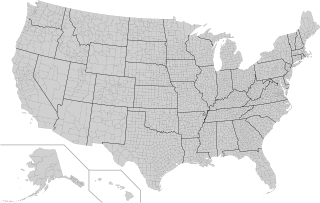 W
WIn the United States, a county is an administrative or political subdivision of a state that consists of a geographic region with specific boundaries and usually some level of governmental authority. The term "county" is used in 48 U.S. states, while Louisiana and Alaska have functionally equivalent subdivisions called parishes and boroughs, respectively.
 W
WThe U.S. state of Louisiana is divided into 64 parishes in the same manner that Alaska is divided into boroughs, and 48 other states are divided into counties.
 W
WThe United States Virgin Islands are administratively divided into two districts, which are divided into 20 subdistricts. These are further divided into quarters and estates.